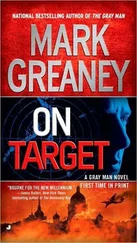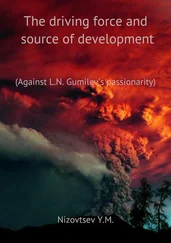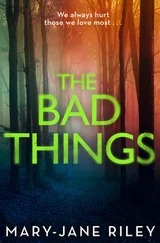By noon the next day the entire façade was complete. From Vidal Alcocer, the six-lane street down which the President would travel, it looked like a massive concrete parking-lot wall with a decorative façade, but in truth it hid the explosive force of three howitzer rounds, and on command, the rounds would launch out into the road in front of it and detonate.
But Zarif wasn’t finished. In the afternoon Zarif had Emilio take him to a grocery store, and here he grabbed a basket and walked directly to the spice section. He picked up several containers of cumin and turmeric.
Emilio asked, “Are you making dinner?”
“You’ll see.”
They returned to the construction site. It was empty again, but now the tarp in front of the wall had been cleared away, and they walked around the wall and under the tarp on the José J. Herrera side. Zarif went to his wall, pulled out his containers of spices, opened them, and got down on his hands and knees. Slowly and meticulously he began pouring them along where the floor met the new wall. He used a lot right below the device, and then he crawled in each direction, sprinkling less and less until he had covered the entire floor.
He stood up, dusted off his hands, and walked over to a drain in the concrete floor of the parking garage. He knelt down and peered through the metal grating, then looked up to Emilio. “One more thing. I need you to find me a dead animal.”
“What?”
“Really dead.”
An hour later a Maldonado runner arrived on the back of a motorcycle. In his hand he carried a white garbage bag. He handed it to Zarif, who opened the bag and recoiled from the stench. A putrefying cat lay inside.
Zarif walked over to the open drain, removed the grating, and dumped the dead cat out of the bag. It fell in just two feet before landing where the drainpipe turned.
He looked to Emilio. “This will also affect the dogs’ noses.”
Emilio nodded. “What dogs?”
“The Americans will search this area before the President drives by. I’ve seen it on YouTube. They will bring dogs that can smell explosives. But here the dogs will smell spices and dead cats.” He pointed up high on the wall. “Even if they check the wall, they won’t check up so high. No one will look for a bomb that points down.”
Zarif grinned at his own cleverness.
50
Adam spent his first day at the Chongju refinery installing his new computer terminal. Even though the machine was a new but run-of-the-mill PC, it had been shipped from France and had been loaded with a few off-the-shelf mining software programs he would use to operate the massive cone crusher. None of the software was terribly complicated, but the tools were very specific in nature, and even though Adam had learned the job in a couple weeks, no one in North Korea had the training or the experience to run the machine.
This meant Adam was the only person authorized to use the terminal, and this was extremely good news for Adam because the cone crusher operating program wasn’t the most distinctive thing about this PC. Adam had been briefed and trained by the CIA’s Science and Technology staff on how to use the terminal to send clandestine messages back to the Acrid Herald operations center at the Liberty Crossing Intelligence Campus.
Even though the device wasn’t attached to the Internet, there was a text feature that was connected not to the computer’s hard drive and motherboard but to another device that had been built into all the hardware. It was, essentially, a satellite phone without a speaker, just the components of the device that could make a connection via satellite and send a text message. The miniaturized pieces of the device were so well hidden within the rest of the computer hardware inside the tower that even if the North Koreans disassembled the machine, they would need a computer hardware expert to come to the conclusion that tiny pieces that didn’t belong were attached to different parts of the motherboard and power supply. Even then it would be nigh on impossible to discern just what the equipment was, only that it wasn’t needed.
But that wasn’t covert enough for Science and Technology. The tiny components they did use were all Chinese in manufacture, made by the company Huawei, which, surely everyone in North Korean intelligence knew, had ties to Chinese intelligence.
Taking this extra step ensured that, even if the computer was revealed as an intelligence collection device, China would be the country blamed for spying on the Chongju operation.
That wouldn’t do Adam one damn bit of good. North Korean counterintel would shoot him for being a Chinese spy just as quickly as they would shoot him for being an American spy, but at least America would be in the clear.
On his first day getting his machine up and running, Adam realized he couldn’t have asked for a better desk. He had the lone workstation at a cubicle alongside a two-story-tall cone crushing machine. As far as secure locations went to broadcast his messages back to ODNI, he felt like he was in a comfortable place.
Several men worked on the machine in his proximity, most of them on a catwalk above him, but Adam was the only man with any business in the back of the machine where his workstation stood. Further, the other workers were mechanical engineers and simple ore loaders, and Adam doubted they would notice anything amiss even if they did see him opening the texting program to contact ODNI.
This cone crusher had been here in North Korea for a year and a half, long before construction started on the refinery. The state-owned Chinese company Chinalco put the machine at the Chongju mine itself, a kilometer to the east, because the Chinese had planned on crushing the ore down to processing size so it could be transported in sacks on trucks, as opposed to larger rocks, which were harder to ferry. But the North Koreans had no problem trucking the ore the kilometer to the processing facility, so they brought the massive machine here, where the electricity ran more regularly than at the mine.
Right after a fifteen-minute break for tea and plant-wide government-mandated singing, stretching, and knee bends, Adam returned to his desk with plans to send his first message home. He checked his area to make sure there was no one around who could see what he was doing. This involved him simply looking back over his shoulder and then scanning overhead through the grating of the catwalk. When he was comfortable that he was clear, he restarted his PC, then went into the BIOS screen of the computer. Here he changed a series of settings, and then pressed enter.
He had two choices now. He could type a 1 , which would take him to the texting program, or he could type a 2 , which would send him to a satellite map of North Korea that had been hidden on the drive. In the case of an emergency exfiltration, Adam’s minders had had the foresight to realize, he would need a good idea of the area and the ability to type in specific coordinates, so the function had been secreted on the drive.
Adam wasn’t on the run now, and he hoped like hell he never would be, so he typed 1 and hit enter again.
The screen went blank except for a small blinking cursor in the lower right.
Adam had to admit, S&T had set this up so no one was going to accidentally find the clandestine software.
He took another glance around, then quickly typed out a message, all in Mandarin, so if it was somehow intercepted, the U.S. would not be blamed for the operation.
SECRET
TO: FLASH FOR TIDALWAVE
FROM: AVALANCHE
SUBJECT: ARRIVAL ESTABLISHMENT
SOURCE: AVALANCHE
1. ALL NOMINAL. FULL REPORT SOONEST
Читать дальше












